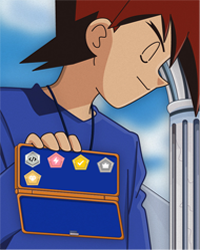C+P I Think?
Thread: Coffee Break with Binary
Results 1 to 2 of 2
-
06-03-2013 #1
Coffee Break with Binary
There are a lot of number systems in the world today. There are decimal, hexadecimal, binary, and many more. Binary is an example of the main number system which operates on most if not all machines and computers. It consists of 0 (zero) and 1 (one). Different combinations of zeros and ones can provide different values or even different functions, such as 1 being ON and 0 being OFF. So overall, a computer stores information in a binary (base 2) format.
Base 2 numbers, as mentioned above, are composed of 2 digits. 0 and 1. Each digit of a number has a power of 2 associated with it based on its position in the number. For example, 11001 (Binary Number) = 25 (Decimal Number). We can work this out with involving a little bit of mathematics. (1 * 2 ^ 4) + (1 * 2 ^ 3) + (0 * 2 ^ 2) + (0 * 2 ^ 1) + (1 * 2 ^ 0). Notice how the power increases as we go along from right to left. Practically, we would write down this calculation by normally using Decimal (Base 10) format. 16 + 8 + 1. The answer is 25. However, machines do not quite like this system, as they only are capable of using transistors to create logic gates where there is power or there isn't any. Power flowing = 1, No Power = 0.
0 = 0000
1 = 0001
2 = 0010
3 = 0011
4 = 0100
5 = 0101
6 = 0110
7 = 0111
8 = 1000
These are the first 8 decimals in their binary state.
Using division methods, we can find the rightmost digit first, which is called the least significant bit (lsb). The leftmost digit of the binary number is called the most significant bit (msb). A basic unit of memory consists of 8 bits which is called a byte. So if you have 8 bytes, that means you would have 64 bits. Remembering the fact that a basic unit of memory is a byte, we can find out what large values of bytes and megabytes are in bits. An average computer with 32 megabytes of memory can hold roughly 32 million bytes of information.
To get into assembly programming language (well, its not much of a programming language), you would first need to understand how memory works.
Each byte in memory is labelled by a unique number known as its address.
Every word has a different unit of Memory.
Word = 2 bytes
Double Word = 4 bytes
Quad Word = 8 bytes
Paragraph = 16 bytes
Data on the CPU is called a Register. There are many different functions which are available to the registers, such as Shift register, Add register, and so on. The data in the registers is accessible by the CPU much faster than data stored in the memory.
Its all I had time to type up. Follow up, assembly insight.
-
06-06-2013 #2Gotta catch 'em all







- Join Date
- Oct 2012
- Gender

- Location
- Posts
- 13,498
- Reputation
 4018
4018- Thanks
- 8,377
- My Mood
-

I do not use any type of messenger outside of MPGH.
Inactive but you can reach me through VM/PM.
Similar Threads
-
[Request] Colru the Golem(break) with hacks
By Xion13 in forum Vindictus Farming Discussions / Farming HelpReplies: 4Last Post: 12-26-2011, 03:04 AM -
im breaking my head with this source code in php
By ivan_tkd1 in forum PHP ProgrammingReplies: 0Last Post: 09-13-2011, 06:37 AM -
Help with hfs for 1hit spear break off
By Ptolemy22 in forum Vindictus DiscussionsReplies: 1Last Post: 05-16-2011, 11:53 PM -
How to Destory Earth with a Coffee Can
By Insomniac in forum GeneralReplies: 30Last Post: 06-30-2010, 12:20 PM -
want to break up with your girlfriend?
By Juan in forum GeneralReplies: 25Last Post: 06-23-2009, 09:44 AM


 General
General





 Reply With Quote
Reply With Quote
